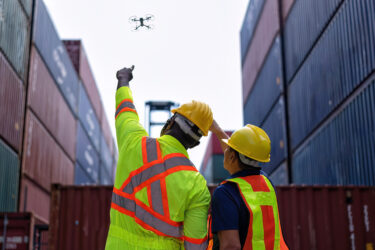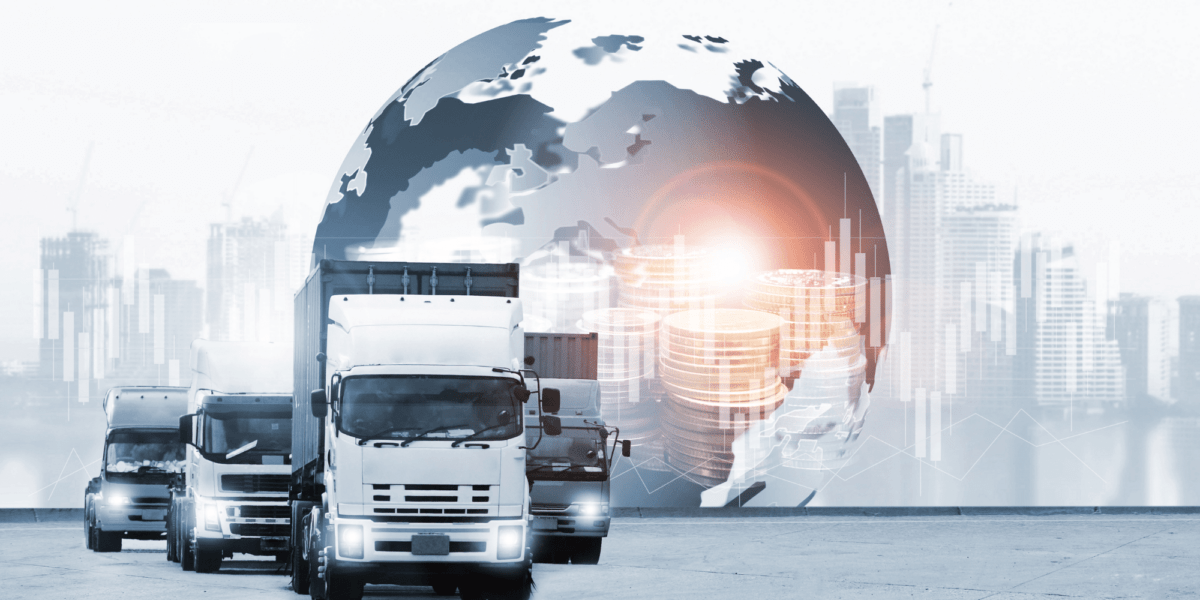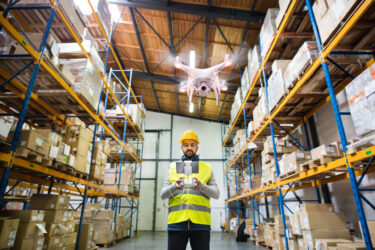

Over the years, the transportation industry has undergone many changes. Throughout history, we have experimented with numerous ways to make transportation faster and more efficient. It includes horse and carriage, airplanes, trains, ships, and, now, self-driving cars. There is another opportunity for change with the arrival of the Internet of Things in this sector. We will take a look at how the IoT is changing the transportation industry in this post.
First things first: what is IoT?
IoT is an acronym for the Internet of Things. IoT is a concept in which devices are interconnected so that they measure their environment and transmit data back to the Internet. The way goods move around in our cities and how people travel in cars is changing because of this.
Technologies such as IoT are reshaping transportation operations. This new technology has a profound impact on how we travel, but especially in urban areas, where parking can be hard to come by and traffic congestion is a major issue. As we’ll point out later, this also impacts logistics related to transportation.
In other words, it is inevitable that it will revolutionize transportation (it does so already).
Transportation challenges in 2021
#1 Shortage of truck drivers
Many of the drivers leave the job after just a few years due to the demanding nature of this position, so there are not enough people to meet the demand for a longer period of time. By using IoT, it is possible to automate and optimize the workload, which will lead to a reduction in turnover.
#2 Fleet size
There can be a lack of a fleet or sporadic operations. Moreover, the use of vehicles should be maximized when they’re on duty, or when they’re called upon based on forecast demands. Increasing the efficiency of this area is also possible with the help of IoT. By deciding which vehicles are to be dispatched, and when, the system is able to avoid overburdening.
#3 Unpredictable yet still growing freight
Some manufacturers and retailers are late delivering their goods, meaning that shippers may be left scrambling. Transport providers need a way to move freight to meet changing demands in the coming years, as freight volumes will grow dramatically. While logistics are challenging to manage and plan, the IoT offers greater accuracy in forecasting freight movement. By leveraging IoT technology, logistics management processes can be optimized by optimizing pricing models based on actual demand forecasts and improving inventory management with better visibility into the freight volumes and trends over time, not just day-to-day fluctuations.
In addition to predicting the movement of freight, real-time information from sensors could lead to real-time optimization decisions regarding routing by combining traditional data sources with real-time sensor data.

How is IoT improving transportation?
Technology-enabled by the Internet of Things is changing the way that the transportation industry operates. Regulatory compliance, logistics, supply chains, and customer experience are all included. In this area of development, one of the most significant advancements has come from improved data collection and analysis in terms of traffic flow and predictive analytics for detecting malfunctions before they occur. The industry is already being disrupted by data-driven insights, and you can expect them to continue doing so.
Globally, the transportation sector contributes significantly to greenhouse gas emissions. The adoption of IoT solutions could help reduce these emissions by improving the efficiency of vehicles. Remote diagnostics, for example, can be used to conduct maintenance before an engine failure or another mechanical issue occurs.
The way transportation is currently being handled must be changed or else it will change on its own due to a lack of preparedness on the part of those managing transportation. The use of IoT-enabled technology in transportation can help solve these problems, as well as many others that face today’s corporations who use this type of data collection. We need to come up with innovative solutions for all sectors within our industry if we want a chance to succeed in addressing these challenges.
If used correctly, the Internet of Things can improve various aspects of logistics. It captures more information than traditional approaches like paper-based systems can, thereby reducing costs by eliminating some manual labor.
IoT in transportation: use cases
#1 Effective fleet management
Effective fleet management can be accomplished with the use of IoT for the monitoring of vehicles in real-time using sensors and other devices.
Using real-time vehicle location tracking, the Internet of Things increases efficiency, reduces costs, and improves customer service. GPS data can be integrated with an automated dispatch system to route vehicles to specific locations based on their availability if they aren’t in use.
There are also other aspects to it. During times of peak demand, IoT technology allows companies to monitor their vehicles to save fuel, and the reduction in fuel consumption grows with the company’s scale.
#2 Vehicle diagnostics and maintenance
Using IoT, companies can identify potential problems before they become expensive ones, such as idling excessively or hard braking. Additionally, they can increase fuel economy through more efficient routes, better driving behavior, and scheduling optimization. It is also important to discuss a lower total cost of ownership (TCO) by reducing breakdowns due to road conditions, flat tires, dead batteries, or accident-related damage. Instead of waiting until there is a problem, technology-enabled by IoT allows proactive maintenance, which means getting into places and replacing parts before problems arise.
#3 Driver safety compliance
A tracking system based on IoT may be introduced that will allow you to locate the vehicle no matter where it is, at all times. A driver’s behavior can also be monitored using this system, such as speeding and harsh braking. Additionally, some of the systems can also monitor potential danger zones in front of them (i.e., blind spots) in order to detect such situations before they occur.
IoT-enabled technology can offer real-time alerts when certain drivers or vehicles on the road exhibit certain behaviors, making the road a safer place for safety-conscious drivers and other motorists.
Additionally, workers’ safety can be improved through greater accuracy in reporting hours worked via IoT sensor data gathered while driving. Through increased documentation tracking capabilities, such as logging daily or monthly miles driven, you can ensure regulatory compliance.
Also, heavy vehicle data may be useful in reducing driver fatigue and creating more efficient routes.
#4 Existing transportation infrastructure
IoT can provide real-time information about bus location, departure times, delays, and other last-minute notifications to passengers by monitoring the performance of buses. Similarly, bus drivers are alerted when they break speed limits in order to adjust their schedules and speeds.
On highways and roads, traffic lights are commonly monitored or controlled remotely using information from connected vehicles. For instance, traffic volume data collected by dedicated short-range communications systems (DSRC) can be used to control traffic lights. Networks of DSRC devices installed along roadways are used to monitor congestion levels, which are used to inform light pattern changes at major intersections or thoroughfares. Furthermore, connected vehicle technology lets drivers know when it is necessary to refuel. This way they can avoid adding unnecessary delays to their journeys. As another emerging technique, sensor fusion uses various types of data such as traffic sensors, GPS systems, and IoT to process information in real-time.

Future of transportation through IoT
As a result of IoT-enabled technology, the transportation sector is changing intensively. Some challenges are foreseeable, but others will only become apparent as we go forward. Nonetheless, each needs a solution.
Vehicle, transportation infrastructure, and freight performance will be monitored via IoT-enabled systems. By analyzing transport routes and anticipating disruptions, enterprises reduce costs and plan ahead for the future.
The future of connected vehicles looks bright thanks to innovations that may lead to driverless cars and trains without conductors. In cities, there are already programs designed to make roads safer by integrating data from various sources. This data includes the location of cars, weather conditions, pedestrian traffic, and so on to predict crashes before they occur.
We are watching the revolution unfold.
If you want to know how the Internet of Things is transforming logistics, check the article on our blog.




